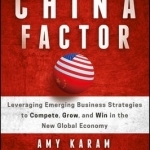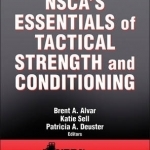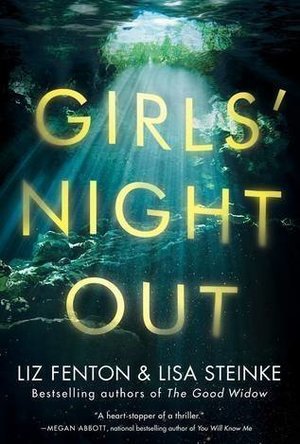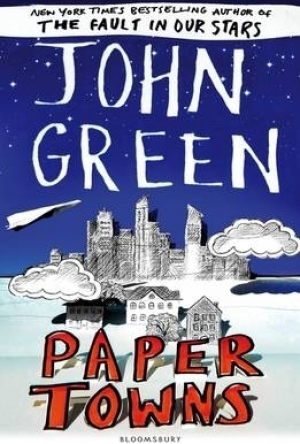Darren (1599 KP) rated Skinwalkers (2007) in Movies
Jul 25, 2019
Varek didn’t count on Timothy being under the watch of another prepared werewolf pack led by Jonas (Koteas) and his daughter-in-law Rachel (Mitra) who wasn’t ready to learn the truth that on Tim’s 13th birthday everything changes in the battle.
Thoughts on Skinwalkers
Characters – Varek is the leader of the werewolf pack that wants Timothy dead to stop the event he will cause, he hunts calmly through the film knowing how to get ahead of his enemies, though he is unaware of his connection to the child. Jonas has been protecting his nephew for years now, knowing what he means to the species, he has built the team his truss around him to make sure he is safe. Rachel is the mother of Timothy, she thinks he is just a normal kid and that she lives in a normal town, he must learn fast how to cope in this world filled with werewolves and protect her son. Sonja is the deadliest fighter on Varek side of the war, she enjoys hurting people and we see her take pleasure in this.
Performances – Jason Behr as the conflicted werewolf is good to watch, he shines on the bad boy side of this story, though when he must show the other side of the emotions we see him struggle at times. Elias Koteas is strong for his role which is one that we often see him in. Rhona Mitra does well in the reluctant heroes being the strong need to learn to battle mother figure in the film. everyone else in the film is fine without needing to be anything special, they fit their roles well to help the story flow.
Story – The story here follows two warring werewolf packs that know the importance of a child for both their existences, so basically something we have seen before only with a modern style to it. The fact the story does feel like an introduction to a much big world building idea is promising and while it isn’t the film’s fault we didn’t see the next chapter, it does show us how story telling can think ahead of time. If we are being honest this is a by the book storyline, it doesn’t bring us anything new to the werewolf mythology it just tries to keep it in the modern world.
Action/Fantasy/Horror – The action sequences are mixed bag because we have shoot-out which are routine and lack the peril for certain characters, while the fights show the effects that two werewolves fighting would have on each other. The fantasy world of werewolves living among humans is nicely done, showing two sides to them, though the horror does seem weak because we never feel terrified by what we are seeing.
Settings – The film uses the settings in a mix of quality and generic, the small town gets the big surprise with everyone being part of the protection, then we hit the road and its nothing we haven’t seen before.
Special Effects – The effects for the werewolves and wounds look nice, its just most are hidden from the full effect of the shock.
Scene of the Movie – Town stand off.
That Moment That Annoyed Me – There are a few blink and you miss it moments.
Final Thoughts –This is a by the book werewolf film, it has good moments, it has forgettable moments and ends up feeling like the pilot for a television show.
Overall: The werewolf genre done safely.

The China Factor: Leveraging Emerging Business Strategies to Compete, Grow, and Win in the New Global Economy
Wiley, Amy Karam and Ken Wilcox
Book
The Innovation of Globalization proven strategies to succeed and out-compete emerging competition...
Canadian author Susin Nielsen continues to entertain children with her latest novel Word Nerd. Similarly with characters from previous novels, the pre-teen Ambrose is a bit of a misfit. With a deathly peanut allergy and an over protective parent who travels from job to job, Ambrose never manages to make any friends. Now settled in Vancouver, Ambrose is the happiest he has ever been. He is homeschooled away from all the bullies, has made a friend and found a passion in Scrabble. However, he has to keep all of this secret from his mother.
Ambrose is a funny, intelligent narrator who draws the reader in from the very first line: “The day I almost died…” Like many children who do not fit in with peers at school, Ambrose’s passions lie within less conventional past times, i.e. playing Scrabble. Able to quickly pull out several words from a jumble of letters – emphasized by the anagram chapter headings – he is overjoyed to learn of a nearby Scrabble club and knows just the person to accompany him.
Cosmo is a character that younger readers may struggle to come to terms with. An ex-convict and recovering drug addict, Cosmo also enjoys playing Scrabble and is persuaded by his annoying neighbour – Ambrose – to go to the club. An unconventional friendship sparks between the two of them, both unintentionally helping the other out. Cosmo encourages Ambrose to stand up to the bullies, whereas having a child around keeps Cosmo away from the things that resulted in a prison sentence. Despite the positives in this relationship, Ambrose’s mother believes Cosmo to be completely untrustworthy.
Although Ambrose and Cosmo are the main characters in Word Nerd, Ambrose’s mother maintains an important role. Having lost her husband suddenly and unexpectedly, she must have been terrified to learn of Ambrose’s peanut allergy. In order to prevent her son from leaving her as well, she has become overprotective and controlling, denying Ambrose the right to live his own life.
Some readers may have experienced similar situations either at school or with their parents. Word Nerd, whilst being a form of entertainment, explains the potential reasons behind these scenarios, helping children to understand what may be occurring in their lives. It also highlights the dangers of drug addictions and crime, but also suggests that people can change their ways.
Word Nerd, whilst voiced by a twelve year old, is more appropriate for readers in their teens. Ambrose is very mature at such a young age, and the book contains subjects of drugs and violence as well as mild sexual references. What Susin Nielsen has produced is an amusing story with a powerful message. Both entertaining and insightful, Word Nerd is perhaps Nielsen’s best novel yet.
Kristy H (1252 KP) rated Girls' Night Out in Books
Mar 10, 2019
I had never read anything by the Fenton and Steinke writing team but had heard good things, so decided to try this one out. Its format takes a little getting used to: it switches in both time and narration, so you'll get Ashley, three days before the disappearance, and then the next chapter could be Lauren, two days after the disappearance. Once you get in the groove, it works pretty well, and builds suspense fairly effectively. Pieces of the story are slowly revealed, as we both don't know what happened to divide the friends in their friendship and, of course, don't know what happened to make Ashley disappear.
Honestly, I had just enough curiosity to find out what happened to Ashley that kept me reading. This was an interesting novel and certainly tense and intriguing, but I couldn't muster much interest or sympathy in these characters. Man, these women were just awful! I would not want a single one of them as my friend, that's for sure. Their friendship problems seemed petty, overblown, and childish, and I lost patience and interest with their myriad issues. There was just so much constant bickering. Bickering, drinking, more fighting, drinking, some more fighting. Ugh. They were so overly dramatic and even worse, most of the chapters would end with a sentence that had such an overblown "dramatic flair" to it that I found myself rolling my eyes at times.
A lot of the book just felt hokey, and I found myself wanting them to just go home and get their own lives (although their husbands didn't seem much better, honestly). Still, as mentioned, the reveals are interesting, and there is enough interest in what happened to Ashley to keep you reading. If you can get past the irritating characters, you'll be intrigued, albeit potentially annoyed.
I received a copy of this novel from the publisher and Netgalley in return for an unbiased review (thank you!).
Canadian author Susin Nielsen continues to entertain children with her latest novel<i> Word Nerd</i>. Similarly with characters from previous novels, the pre-teen Ambrose is a bit of a misfit. With a deathly peanut allergy and an over protective parent who travels from job to job, Ambrose never manages to make any friends. Now settled in Vancouver, Ambrose is the happiest he has ever been. He is homeschooled away from all the bullies, has made a friend and found a passion in Scrabble. However, he has to keep all of this secret from his mother.
Ambrose is a funny, intelligent narrator who draws the reader in from the very first line: “The day I almost died…” Like many children who do not fit in with peers at school, Ambrose’s passions lie within less conventional past times, i.e. playing Scrabble. Able to quickly pull out several words from a jumble of letters – emphasized by the anagram chapter headings – he is overjoyed to learn of a nearby Scrabble club and knows just the person to accompany him.
Cosmo is a character that younger readers may struggle to come to terms with. An ex-convict and recovering drug addict, Cosmo also enjoys playing Scrabble and is persuaded by his annoying neighbour – Ambrose – to go to the club. An unconventional friendship sparks between the two of them, both unintentionally helping the other out. Cosmo encourages Ambrose to stand up to the bullies, whereas having a child around keeps Cosmo away from the things that resulted in a prison sentence. Despite the positives in this relationship, Ambrose’s mother believes Cosmo to be completely untrustworthy.
Although Ambrose and Cosmo are the main characters in <i>Word Nerd</i>, Ambrose’s mother maintains an important role. Having lost her husband suddenly and unexpectedly, she must have been terrified to learn of Ambrose’s peanut allergy. In order to prevent her son from leaving her as well, she has become overprotective and controlling, denying Ambrose the right to live his own life.
Some readers may have experienced similar situations either at school or with their parents. Word Nerd, whilst being a form of entertainment, explains the potential reasons behind these scenarios, helping children to understand what may be occurring in their lives. It also highlights the dangers of drug addictions and crime, but also suggests that people can change their ways.
<i>Word Nerd</i>, whilst voiced by a twelve year old, is more appropriate for readers in their teens. Ambrose is very mature at such a young age, and the book contains subjects of drugs and violence as well as mild sexual references. What Susin Nielsen has produced is an amusing story with a powerful message. Both entertaining and insightful, <i>Word Nerd</i> is perhaps Nielsen’s best novel yet.
<i>This eBook was provided by the publisher via NetGalley in exchange for an honest review</i>
Erin Eveland is known for her short horror stories but she has moved onto writing novels with <i>Darkness</i> being her first of a series. It was not scary in the way that horror books are generally perceived to be but it did contain a good deal of paranormal ideas.
It begins when the main character, Catherine, is six years old and living with her grandmother. She is constantly haunted by an unseen presence, a nameless terror, which worries her grandmother immensely. Very suddenly, Catherine’s grandmother suffers a fatal heart attack and Catherine ends up being removed from her well looked after home to a dirty trailer park to live with her alcoholic mother. The novel then fast-forwards ten years to a time when Catherine is mostly fending for herself and her mother never goes a day sober. The terrors of her childhood have all but been forgotten but Catherine is beginning to remember and have similar experiences all over again. These incidents increase with the mysterious appearance of a man named Jorgen who insists he wants to protect Catherine. Meanwhile, Nathan, a friend of Catherine, comes into contact with an intriguing man in black who begins to teach him about colours and Darkness – something which could have done with a little more detail. Unbeknownst to Nathan, his dealings with this man may result in harming Catherine, especially as the two friends begin to see odd moving shapes – shadow creatures.
For a while there appeared to be a very thin line between heroes and villains as it took some time to work out the intentions of Jorgen and Artros (the man in black). The novel would have benefitted with more description about these characters: who they are or more importantly, what they are, as well as the significance of the shadow creatures.
Although it was good to be introduced to the paranormal aspects right at the start, this resulted in lessening the amount of foreboding and dread throughout the main bulk of the novel. Even though <i>Darkness</i> is the first in a series, it did not feel that it was properly starting until nearer the end. On finishing, the reader still does not know much about the shadow creatures or what the Darkness is. Presumably the sequel will be more enlightening.
<i>Darkness</i> is sub-titled “An Interactive Novel” and includes Quick Response codes at the beginning of each chapter to heighten the reading experience with the interactive addition of art and music. Of course to benefit from this a smart phone is required (I do not have one therefore cannot comment further on this feature).
Overall, <i>Darkness</i> is a well-written book full of originality that has the potential to become an exciting young adult series.

Reading Trainer for iPhone
Education and Productivity
App
Reading Trainer improves your reading speed and retention rate with 12 challenging and fun...

NSCA's Essentials of Tactical Strength and Conditioning
Nsca -National Strength & Conditioning Association
Book
The physical demands of tactical professions such as military, law enforcement, and fire and rescue...

Reading Trainer
Education and Productivity
App
Reading Trainer improves your reading speed and retention rate with 12 challenging and fun...
Hazel (1853 KP) rated Paper Towns in Books
Dec 7, 2018
<i>Paper Towns</i> is a brilliantly written novel by John Green. Having only previously read <i>The Fault in our Stars</i> I have little to compare it to and cannot say whether it is his best. I am writing this less that half an hour after finishing <i>Paper Towns</i> therefore it is still fresh in my mind, which may explain my slight preference over <i>TFIOS</i>. However the story lines are so different that it is not really fair to compare them.
Set in Orlando, Florida, <i>Paper Towns</i> is narrated by eighteen-year-old Quentin Jacobson (often referred to as Q). It begins with a flash back to when he and next door neighbour, Margo Roth Spiegelman, were nine and discovered a dead body in the park. It is here that the differences in character are pointed out: “As I took those two steps back, Margo took two equally small and quiet steps forward.” Q is an anxious boy, whereas Margo comes across as very confident.
Despite their childhood relationship, for the main bulk of the story Q and Margo have grown apart. They belong to different social circles: Margo to the popular crowd and Q with the gamers, band members and social outcasts. But things take a turn when one night Margo climbs through Q’s bedroom window and insists he accompany her on a nighttime adventure, going around righting wrongs and wronging rights.
But the next day Margo runs away telling no one where she is going, except it appears that she has left clues to her whereabouts. Clues only intended for Q to discover. With the help of his prom-obsessed friend, Ben; Radar, the guy whose parents own the world’s largest collection of black Santas (seriously, where does Green come up with this stuff?); and Lacey, Margo’s best friend and Ben’s soon to be girlfriend; Q struggles to understand the clues and uncover Margo’s hiding place.
To begin with it is exciting to read about Q and his friends unscrambling the hidden messages but as the story goes on and Margo is yet to be found a sense of dread creeps up on us and Q begins to think the worst.
The final section, however, is fast past and thrilling to read as the characters travel across states, with a rather short time limit, in Q’s mini van in a final attempt to find Margo. What will they find when they arrive? Will Margo still be there?
At first I was not sure that I would like this book. Chapter one is mostly about Quentin, Ben and Radar fooling around as boys do, but once everything kicks off with Margo it is really exciting. Similarly to <i>The Fault in our Stars</i>, Green has filled <i>Paper Towns</i> with clever metaphors with paper, string, balloons and grass being used to represent life. It is a very witty narrative containing lots of humour, yet also manages to convey important ideas about the way we see the world, and the people in it.
<i>Paper Towns</i> can be described as a contemporary, coming-of-age story. As mentioned already, Margo was portrayed as a confident girl whereas Quentin was the opposite. Despite Q stating “I wanted Margo’s disappearance to change me; but it hasn’t, not really” I think Green has shown major character developments, and possibly even role reversals. Q may never completely get rid of his anxieties and does not totally become a different person, but he does gain more confidence as he is forced out of his comfort zone, and his perception of other people also begins to alter. Margo on the other hand may not be all that she seems. The real Margo may in fact be a quiet, rather lost teen in a world she feels trapped in. I think this story and Q’s development has the potential to inspire others of similar ages and make all readers question things about themselves.
Overall, an exceptionally good read.




